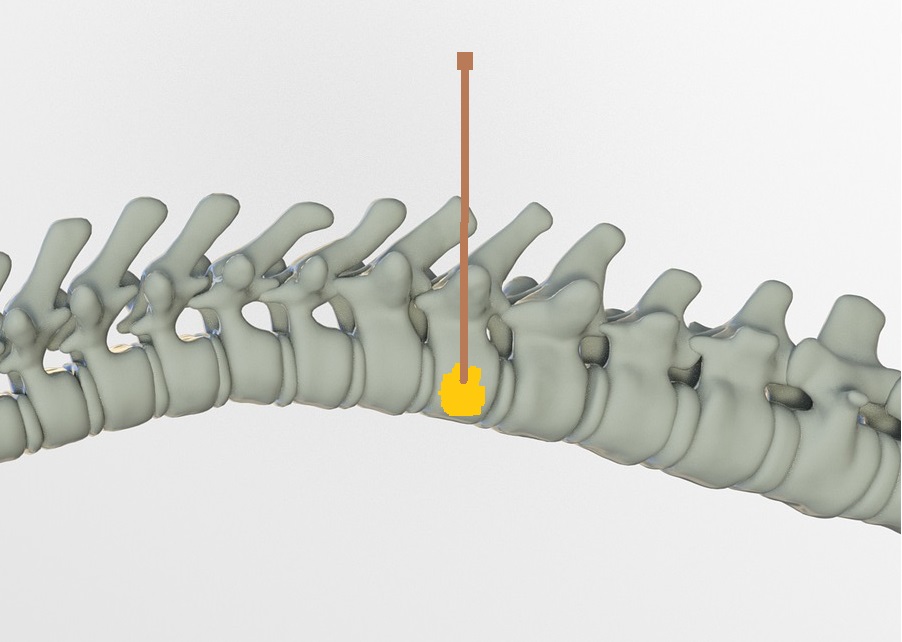Vertebroplasty and Kyphoplasty
Vertebroplasty & Kyphoplasty: What You Need To Know
Vertebroplasty and kyphoplasty are minimally invasive procedures used to stabilize compression fractures in the spine and reduce pain. These fractures occur when vertebrae cannot support upper body weight, and small cracks appear in them. The vertebra collapses onto itself and loses up its height—usually on the front. The fracture of the vertebrae leads to pain in the back. Usually, such fractures occur in the thoracic and lumbar regions.
When several vertebrae collapse, it leads to a humped spine, also known as kyphosis. Thus, to relieve pain and strengthen the weakening spine, your doctor may recommend vertebroplasty or kyphoplasty.
The procedure of Vertebroplasty
Your pain physician will assess your condition and see which procedure benefits you. Vertebroplasty has the following steps:

Vertebroplasty
- You will lie face down on the operating table, and a healthcare provider will cleanse and inject a local anesthetic to your back. You will be under a light sedation as well, but you will remain conscious throughout the procedure.
- Your pain doctor will direct a small needle through a small skin puncture into the fractured vertebrae. Live X-ray guidance (fluoroscopy) is mandatory for the proper position of the needle.
- Then, the doctor will inject liquid bone cement into the cracks and fractures of the vertebrae and fill them.
- The bone cement will harden and stabilize the bone. After that, your pain physician will remove the needle and seal the skin puncture with a bandage.
After the procedure, you are kept under observation for a few hours to ensure no complications occur. When the observation period is complete, you are free to go home. It is a same-day, outpatient procedure.
The procedure of Kyphoplasty
The kyphoplasty procedure has similar steps with only a few exceptions as follows:
- The guided needle into the vertebrae contains a deflated balloon. Your doctor will carefully inflate it to create a cavity within the vertebrae.
- Then, they will remove the balloon and inject cement into the cavity. It hardens quickly and strengthens the vertebrae.
Who Is A Candidate Of Vertebroplasty or Kyphoplasty?
Your pain physician may recommend any of these procedures if severe pain persists for at least two weeks. For example, you might be a good candidate for these procedures if your compression fracture is due to the following conditions:
- Osteoporosis (depletion of calcium usually in older people) with painful fractures
- Injuries to the back
- Metastatic cancer (spread of cancer from other areas)
- Cancer pain from vertebra with or without fracture
To treat these fractures, your doctor may recommend either vertebroplasty or kyphoplasty. If you have a humped spine, they will recommend kyphoplasty. But if your vertebrae only have fractures, they will recommend vertebroplasty.
Contraindications For Vertebroplasty/kyphoplasty
You may not benefit from these procedures if you have:
- Non-painful, stable compression fractures
- Osteomyelitis (bone infection)
- Bleeding disorders or use blood thinners
- Allergy to cement
- Tumor or a fracture fragment in the spinal canal
- Old and chronic fractures
These procedures do not help with old, chronic fractures because they will have already healed. That is why most doctors now recommend vertebroplasty or kyphoplasty within the first week for good results.
Side Effects Of Vertebroplasty and Kyphoplasty
These procedures are relatively safe. The risk of side effects and complications depends upon the experience of your surgeon. It also depends upon the equipment they use. Some of the unwanted effects may include:
- Excessive bleeding
- Allergic reaction to the cement
- Infection at the procedure site
- Bone cement may leak into the surrounding area. It can cause pain by compressing the nerve roots or spinal cord (rare though).
- Paralysis is a rare possibility as a result of the procedure if the needle placement is not proper.
- The procedure fails to relieve pain.
The risk of complications significantly increases in cases of tumor fractures compared with fractures caused by osteoporosis.
Advantages Of Vertebroplasty and Kyphoplasty
These procedures have good efficacy in reducing pain. The desired outcome depends on many factors, though. For example, the cause of fracture, the time passed since fracture, the procedure used, etc.
Vertebroplasty relieves pain in 70 to 90 percent of the patients. Kyphoplasty also reduces pain in most patients and helps them get back to their daily activities. In addition, there is some evidence that these procedures are risky in older people. Therefore, proper care is a must to minimize risks.
Other advantages include:
- Minimally invasive procedures
- Short recovery time
- Reduced use of pain medications
- Smal risk of side effects such as infection and anesthesia complications
Consult your doctor thoroughly about the procedure and possible outcomes.



